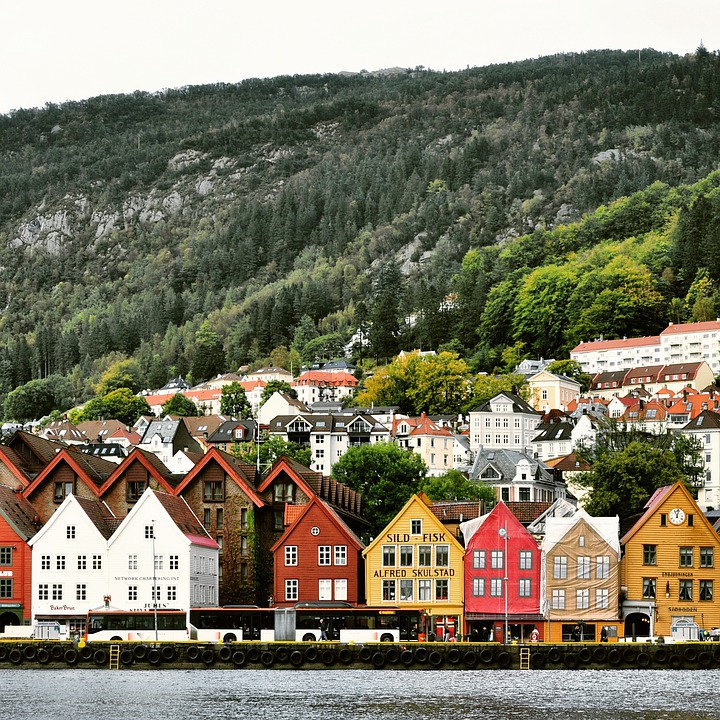When examining the innovative approach of Norway’s future sustainability plan in a previous article we analyzed Visit Norway’s ambitious National Tourism Strategy 2030. Commissioned by the Ministry of Trade, Industry and Fisheries in January 2020 to develop a general strategy for the development of Norway as a travel destination, the project focuses on creating greater value of the country’s offerings while being part of the solution to the climate crisis. It even recommends the development of a carbon calculator named Klimasmart (Climate smart), which will calculate CO2 emissions for the various parts of a trip. In the center of it all is the commitment to reduce by 50% its climate emissions by 2030 (based on 2019 levels).
Since then, this strategy has gained momentum as it echoed ideas and solutions applicable to many other destinations worldwide which are now going through the same type of processes. During COP26 held recently in Glasgow, the strategy was applauded as Norway co-signed the Glasgow Declaration for Climate Action in Tourism, an initiative with the goal of fulfilling the climate ambitions of the global tourism industry.
The strategy has had such an impact in the sustainable tourism world that it has now become a compulsory part of the syllabus at Harvard University. Master’s students of ‘Pursuing Sustainability in the Travel & Tourism sector’ have the opportunity to learn how Norway will secure 20 billion in increased export revenues and 43.000 jobs in the next ten years.
Bergen at The Core of Norwegian Sustainability Actions
A great representative of what Norway stands for in terms of sustainability is Bergen, located on Norway’s southwestern coast and the country’s second-largest city. The first thing that catches one’s attention is that Bergen is the city with the highest percentage of electric cars in Norway (25%), a number expected to rise further since nowadays electric cars are about 80% of all new cars being sold in the city.
Along with private transportation, buses and taxis offer electric or hybrid options along with the largest infrastructure for charging vehicles in the Nordic region located at Bergen Airport Flesland. Buses, in particular, are picking up the pace and run in the city center exclusively on electricity or biofuel. Tide, the main bus operator in Bergen, has just begun the operation of their first electric tour buses. Public transportation also offers a modern light rail which operates from the airport to the city center, with one more line currently under construction.
Extending the research towards the sea, the Bergen region has turned all ferries electric, boasting also the first electric ferry in the world which was launched as early as in 2015. Express boats and fjord cruises are also making a transition towards green energy. “For Norway, which is self-supplied with renewable energy, using electricity for transportation makes a lot of sense. But it means a lot for the costumers also to enjoy their mode of transportation in a more silent and comfortable way,” says Magnus Brekke Nygaard, Project Manager Sustainability at Visit Bergen.
Meetings Follow the Same Path
Visit Bergen, the city’s convention bureau, is committed to turning business events into a sustainable sector. “When it comes to business events, one of the most important things is that the suppliers have integrated sustainability in their strategies and are reporting on their footprints. In Bergen 100% of all the major venues hold a third-party sustainability certificate. One of the venues, Grieghallen have also implemented specific criteria for green conferences as part of their certification,” says Nygaard.
At Grieghallen you will find beehives on the roof, organic food, waste sorting in every room, minimal paper use, and many informative screens. Grieghallen also uses the app “Too Good To Go” to reduce food waste after their events. The Sales and Advertising Association in Bergen is one of the first to host a certified Green Conference in the venue. The timing was perfect, as their conference “The Big Sustainability Day” was focusing on how businesses can take part in the sustainable transition.
For more information on Norway as a conference destination: Elisabeth.Alethe.Bugge@innovasjonnorge.no / www.visitnorway.com/meetings
For more information on Bergen: en.visitbergen.com/meetings/our-services / en.visitbergen.com/about/news/sustainable-tourism-in-bergen
“We are working with our customers to ensure they have the adequate knowledge in how to minimalize the negative footprint and increasing the positive impact from their business events held in Bergen. The costumers are, for example, given a choice to acquire a Bergen card for their event attendees. The Bergen card, among other things, includes free use of public transport and free entrance to most museums. Minimizing the transportation needs and giving the attendees a better understanding of the city’s culture and history. In 2022 we are working to publish a guide for sustainable events and conferences which suppliers and customers can use in their planning to create more sustainable events and conferences in Bergen,”explains Nygaard.
Sustainability is an ongoing process, and this is clear to the Bergen team. “We are now working to implement a new legacy program for events and conferences, we encourage event agencies and suppliers to obtain a third-party sustainability certification, we are developing guides and provide advice on how customers and suppliers should work to achieve more sustainable events and conferences. A project we are working on now is how we can succeed in increasing the use of locally grown and produced food in events, boosting the impact events will have on the local economy. There are still many steps that can be taken to build a more sustainable future, so we have to keep pushing in the right direction,” concludes Nygaard.
